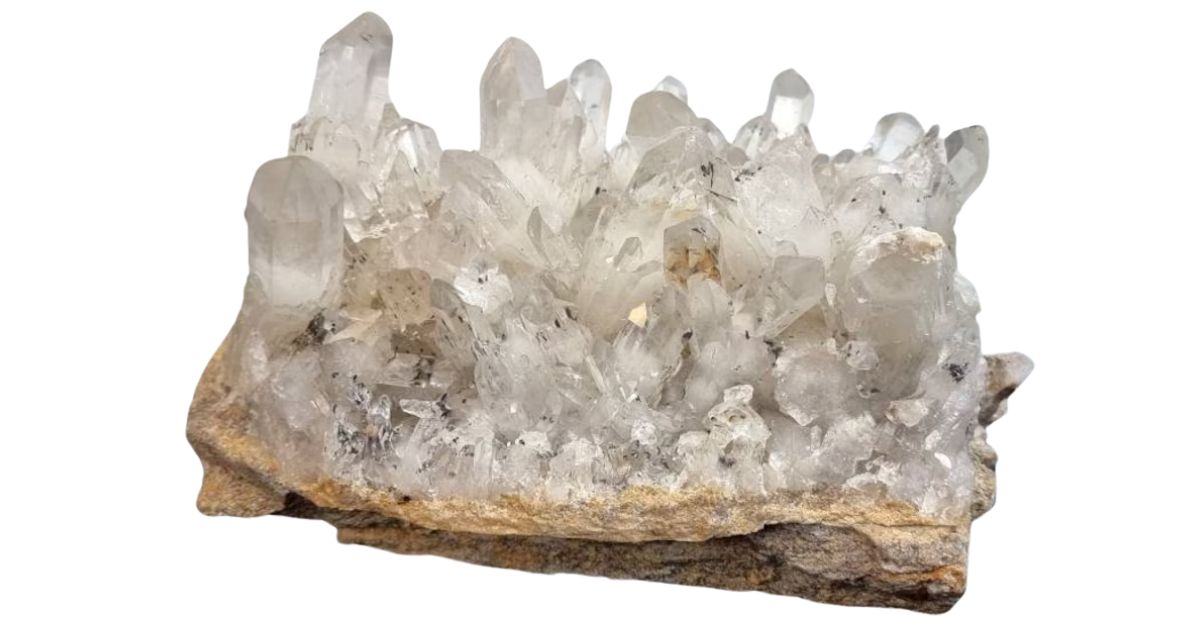Quartz is one of the most common and varied minerals on Earth, found in many different forms. Agate, amethyst, and Faden quartz are just a few examples of the types of quartz that exist.
Not only is quartz fascinating for its variety, but it’s also incredibly important in various industries. It’s used in electronics for its ability to conduct electricity, in jewelry for its beauty, and in construction for its durability.
In exploring the diverse types of quartz, we’ll delve into the unique characteristics of each variety. We’ll look at how they’re formed, where they’re found, and what makes each one special.
The 24 Different Types Of Quartz And What They Look Like
Quartz forms in different types of environments deep within the Earth, like in molten rock or areas with lots of water and minerals. These various geological settings are like nature’s factories, each producing its own kind of quartz.
The colors in quartz are super interesting because they come from tiny amounts of other elements that mix in with the quartz. Even a small amount of these elements or impurities create the diversity we see in this mineral.
Clear Quartz
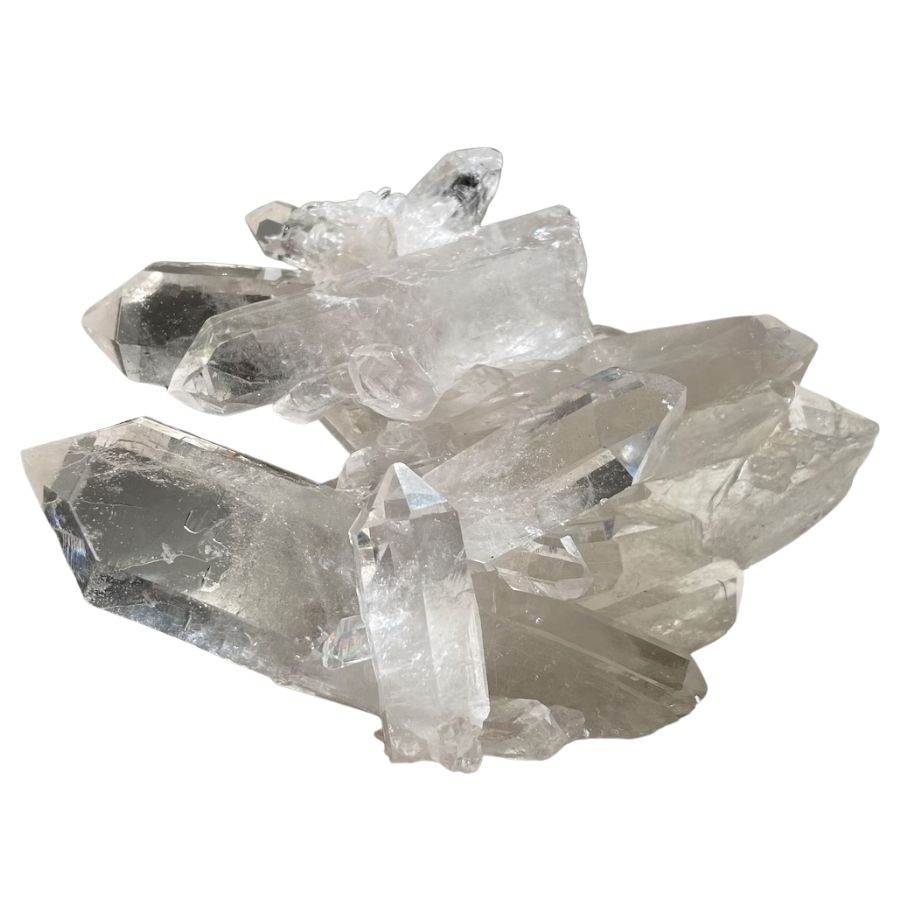
Clear quartz is a really fascinating type of quartz that’s totally transparent. This kind of quartz is super cool because you can see right through it, but sometimes it has tiny bubbles or lines inside.
When you find clear quartz, it can be in different shapes. Some pieces are long and pointy, like a pencil, while others are chunky and rough.
Even though clear quartz is see-through, it’s also very strong. It’s not easy to scratch or break, which makes it great for all sorts of neat things
Where you can find clear quartz
Clear quartz can be found in the mountains of Arkansas, USA, and the Alpine regions of Europe. You can also find it in Brazil, Madagascar, and Russia.
Rose Quartz
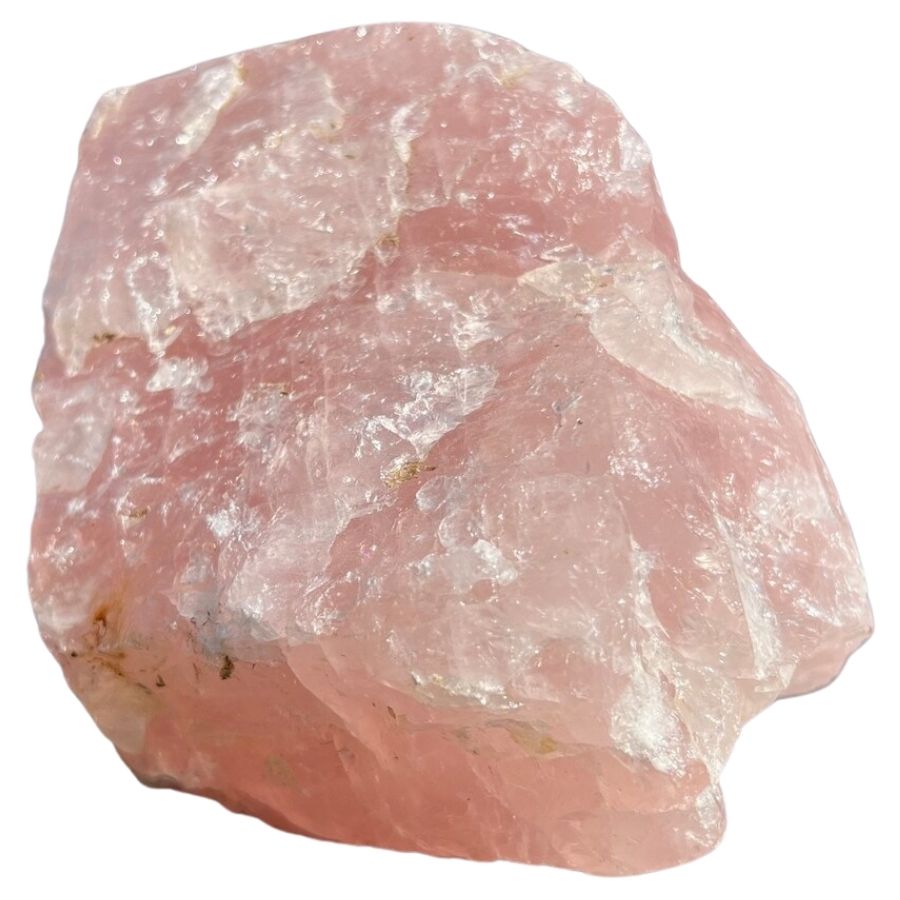
Rose quartz is really pretty because it has this soft pink color that looks kind of like the sky at sunrise. This pink color and cloudy appearance make rose quartz easy to recognize and a favorite for many rock enthusiasts.
What’s cool about rose quartz is that it can be found in different shapes. Unlike many other kinds of quartz, rose quartz is typically found in large, chunky masses rather than in the usual elongated crystal form.
Rose quartz is used for various things. It’s popular in making decorative items like carvings, sculptures, and various kinds of home decor.
Where you can find rose quartz
Rose quartz can be found in cool places like Brazil, Madagascar, and the United States, especially in South Dakota. It’s also pretty common in the mineral-rich areas of India and Germany, where it’s a hit with rock enthusiasts.
We have a great guide to mining for crystals. It covers all sorts of details about how these beautiful minerals are found and collected, making it a must-read for rock collectors and gem lovers.
Amethyst
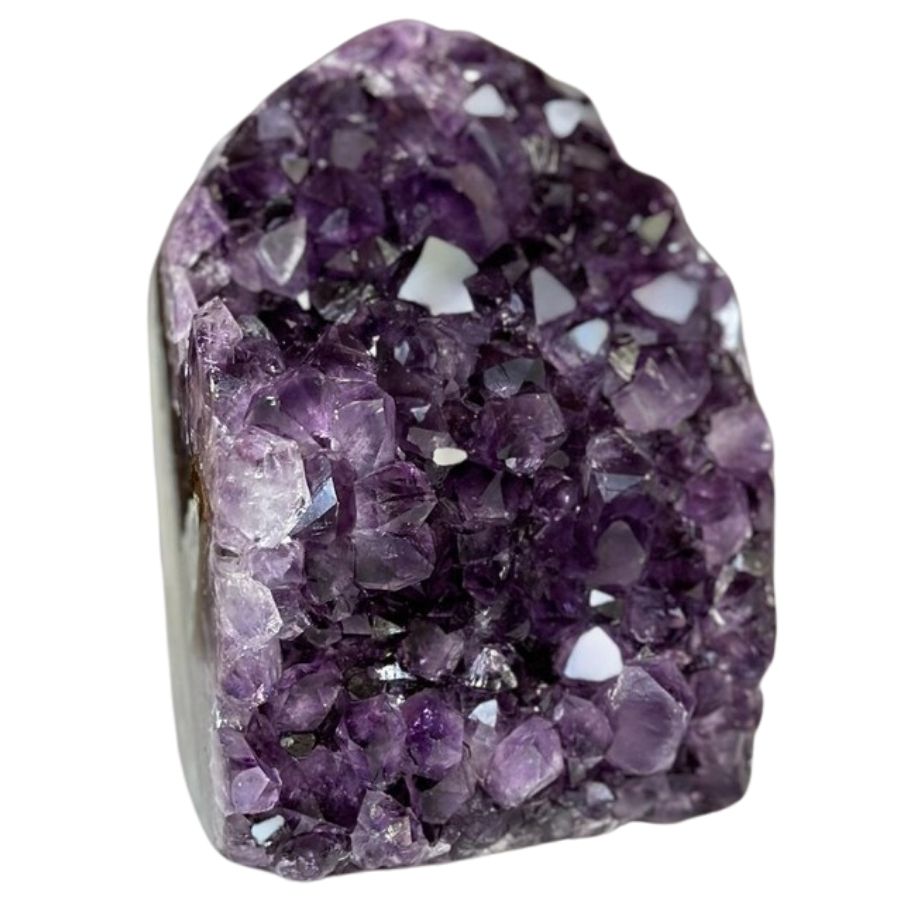
Amethyst is a really cool type of quartz that stands out because of its beautiful purple color. The shades can range from a light lavender to a deep, rich purple.
This signature purple color comes from trace amounts of iron and other elements inside the quartz. When these elements are exposed to radiation naturally occurring in the earth, they create the vibrant purple hues that make amethyst so captivating.
One interesting thing about amethyst is its crystal shape. It often forms in pointed, six-sided crystals that can be quite large or small and delicate. These crystals can grow together in clusters, creating stunning formations.
Where you can find amethyst
Amethyst is found in several cool places around the world, like Brazil and Uruguay. It’s also found in the United States, specifically in Arizona and Minnesota, and in other countries like Russia and South Korea.
Citrine
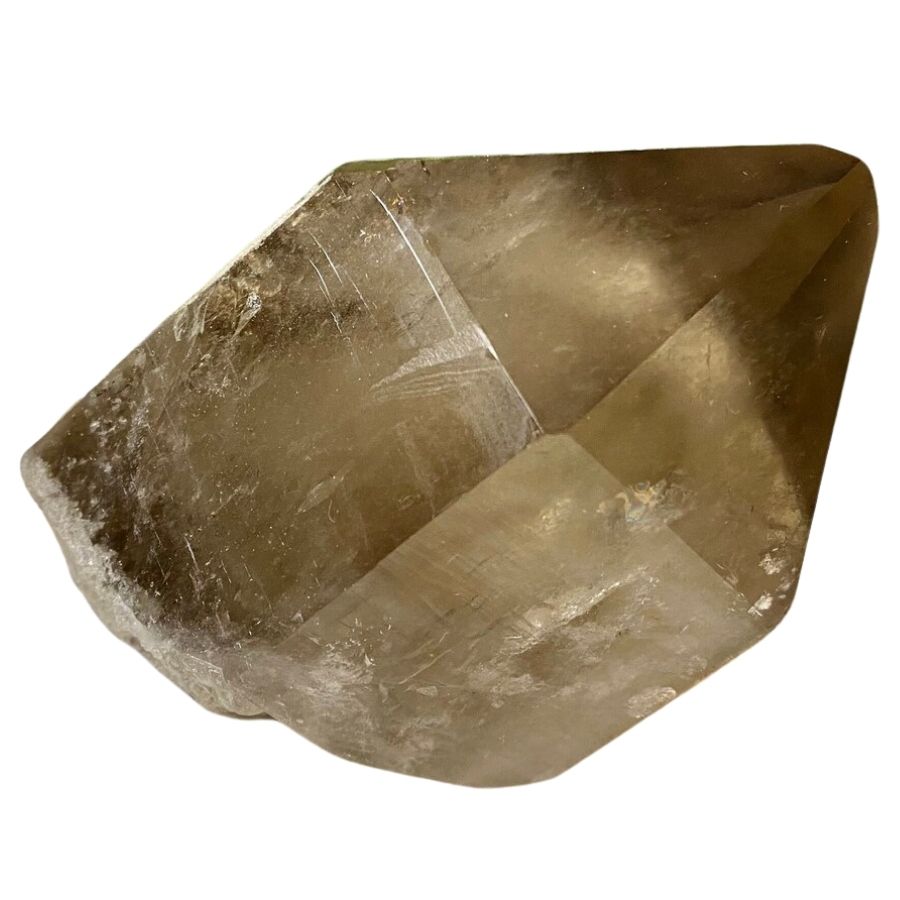
Citrine is a really interesting type of quartz that catches the eye with its bright yellow to orange-brown colors. The warm colors of citrine range from pale yellow to a deep, rich amber, giving it a sunny and cheerful appearance.
One of the neat features of citrine is its crystal form. It often grows in pointed, hexagonal shapes, and sometimes you can find it in large, impressive clusters.
Citrine is quite rare in its natural form. Most of the citrine found today is actually amethyst or smoky quartz that’s been heat-treated to bring out the yellow and orange colors.
Where you can find citrine
Citrine can be found in exciting places like Brazil and Spain. It’s also found in the United States and in Madagascar.
Smoky Quartz
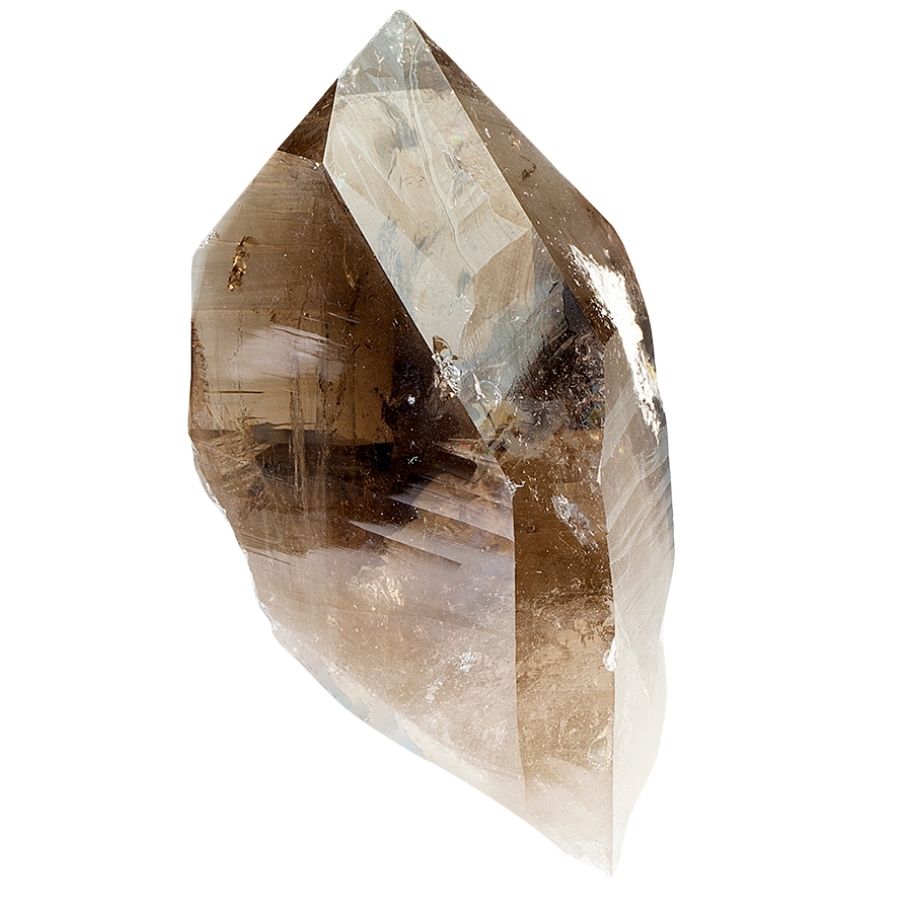
Smoky quartz is a type of quartz, a mineral made mostly of silicon dioxide. It shares the same general chemical composition and crystal structure as other types of quartz, but it stands out due to its distinct coloration.
The most striking feature of smoky quartz is its color, which can range from a light, smoky gray to a deep, almost black hue, with a glassy or slightly shiny luster. These characteristics make it easily identifiable and fascinating to observe.
Smoky quartz is formed in nature primarily through the irradiation of clear quartz. This process, where natural radiation from surrounding rocks alters the crystal structure, leads to the formation of its signature smoky color.
Where you can find smoky quartz
Smoky quartz is found in countries like Brazil and the Swiss Alps. It’s also found in states like Colorado, Maine, and New Hampshire.
Milky Quartz
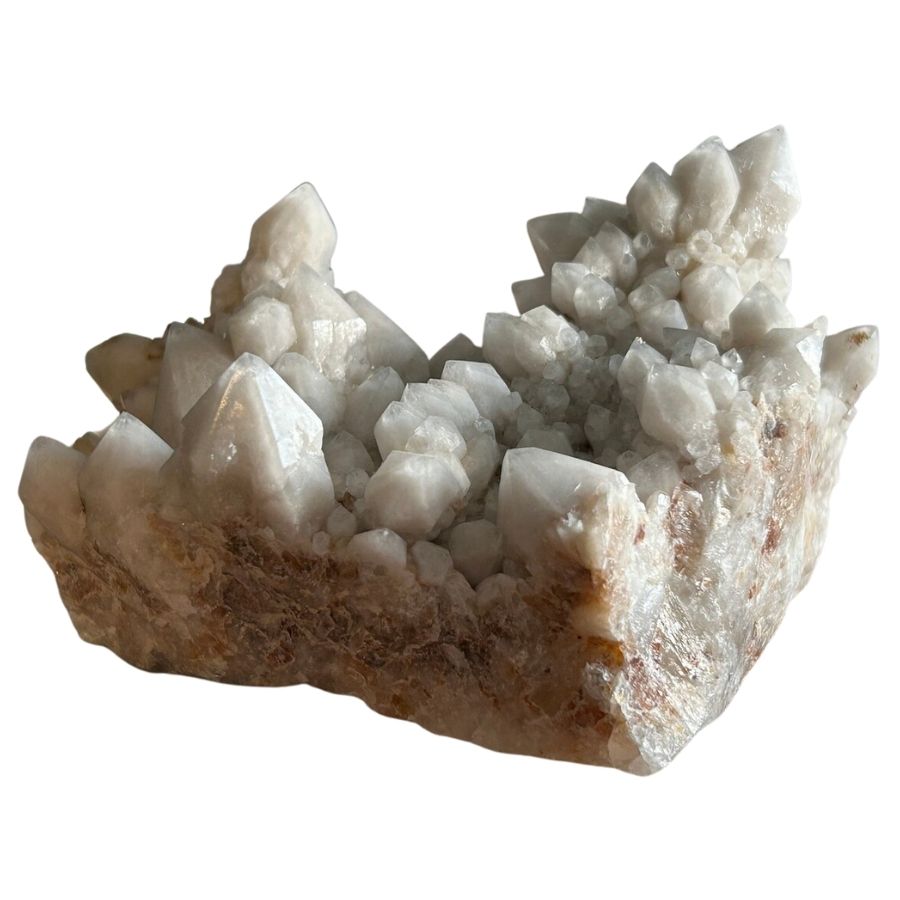
Milky quartz is a really interesting member of the different types of quartz. It’s known for its cloudy white appearance, which makes it look like a piece of frozen milk. This cloudiness is because it has tiny bubbles of gas or liquid trapped inside.
Unlike clear quartz, milky quartz isn’t transparent. Instead, it has a translucent to opaque look, which means light can pass through it, but you can’t see clearly through it.
Milky quartz forms through geological processes involving high temperatures and pressures deep within the Earth’s crust. Over millions of years, the gradual cooling of silica-rich solutions allows the formation of these distinctive, cloudy crystals.
Where you can find milky quartz
Milky quartz is especially common in regions like the United States, Brazil, and Madagascar.
Chalcedony
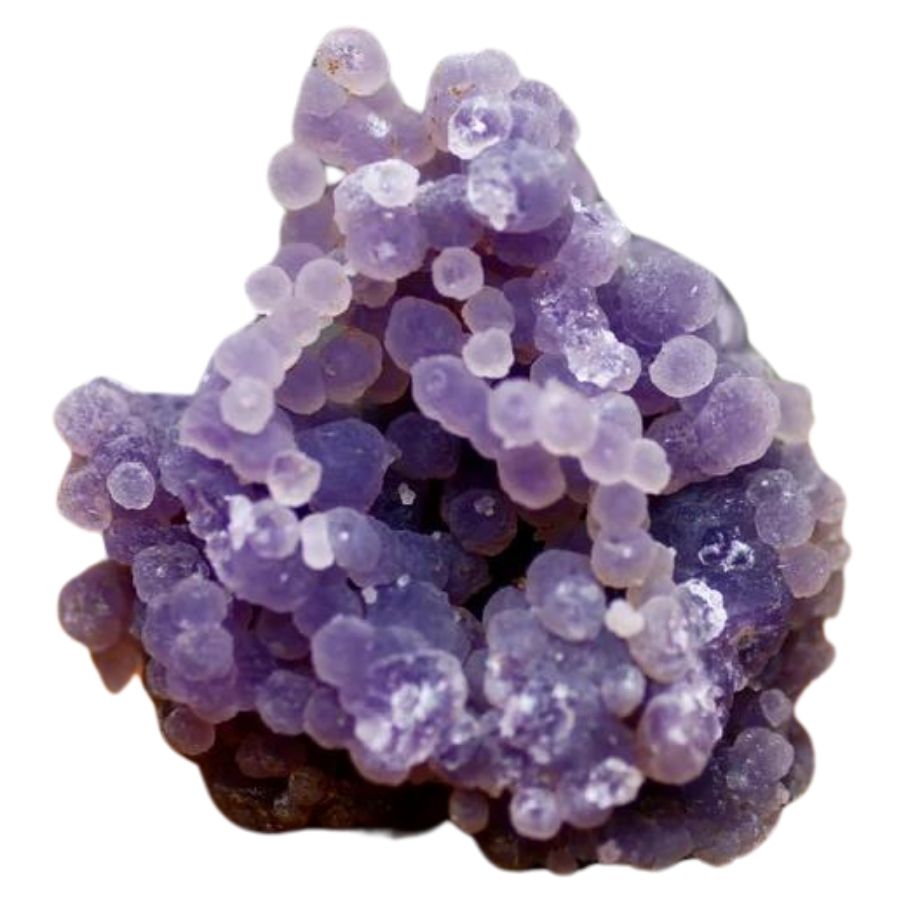
Chalcedony isn’t like your typical crystal. It’s more like a solid, waxy stone that can come in lots of different colors, from blue and green to red and orange.
One of the more remarkable things about chalcedony is its smooth and almost glassy surface. This makes it really neat to look at, which is why it’s often used in jewelry.
It also often forms in a fascinating crystal shape, called botryoidal, which means that it looks like a bunch of grapes. It doesn’t have the usual crystal faces or sharp edges that other kinds of quartz have.
Where you can find chalcedony
Chalcedony is found in many places around the world, including Brazil, India, and parts of the United States like California and Arizona. It’s also common in Turkey, Madagascar, and Uruguay.
Carnelian
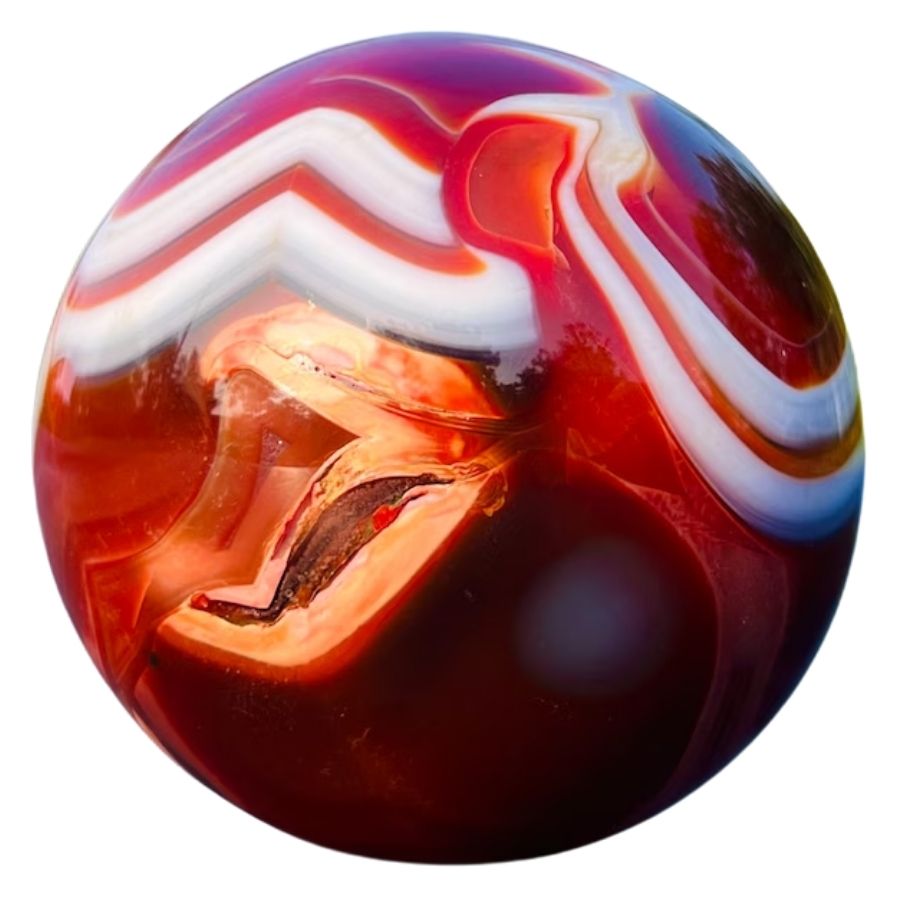
Carnelian is a beautiful type of quartz known for its vibrant orange and red colors. It can range from a pale, almost pinkish-orange to a deep, rich red, giving it a fiery and warm appearance.
This mineral is usually pretty smooth and can have either a translucent or opaque look. The way carnelian catches the light, especially when polished, adds to its visual appeal.
People often use carnelian to create things like beads, seals, and small sculptures. Because it has bold colors and it’s easy to carve, carnelian popular for these artistic and ornamental purposes.
Where you can find carnelian
Carnelian is found in various countries, including India, Brazil, and parts of Africa. It’s also discovered in places like the United States, specifically in Oregon and Washington.
Aventurine
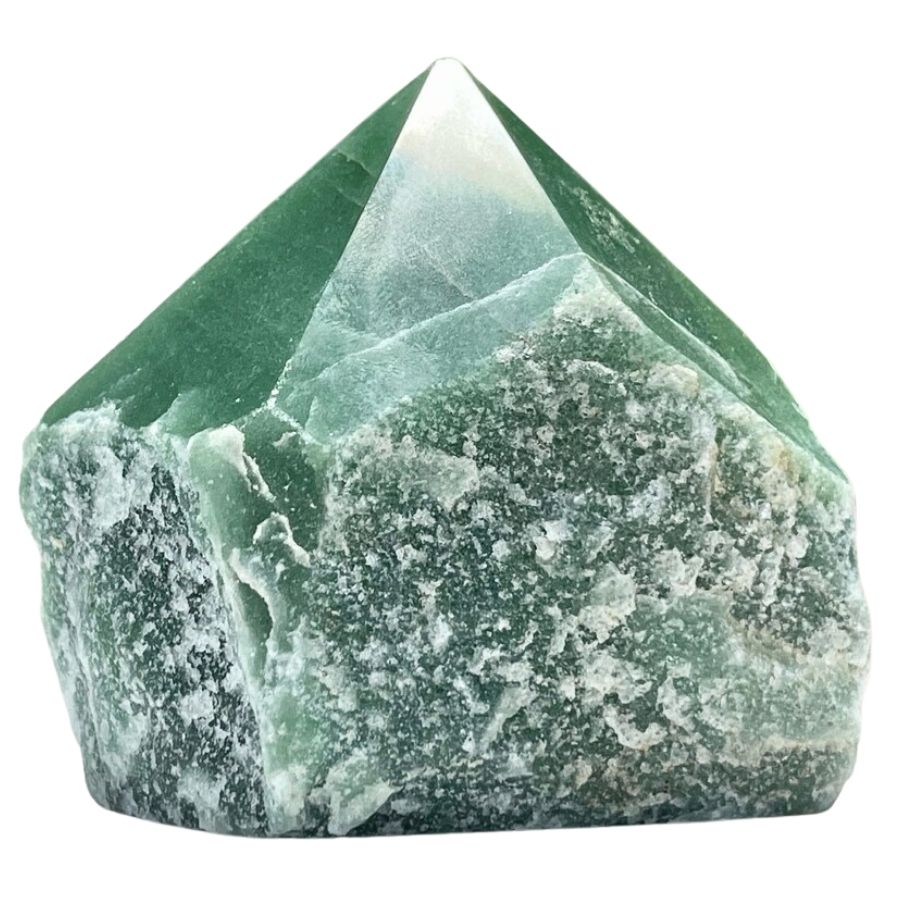
Aventurine is a really cool type of quartz that’s known for its shimmering, sparkly appearance. It’s usually green, but can also come in colors like blue, red, orange, and brown.
The sparkly effect, called aventurescence, happens because of tiny bits of minerals inside the stone, making it look like it’s glittering.
This mineral is often used in various decorative items, like sculptures and bowls, because of its unique look. The way aventurine glitters and shines, especially when it’s polished, makes it a favorite for these kinds of artistic creations.
Where you can find aventurine
Aventurine is found in India, Brazil, Russia, China, and Tibet.
Agate
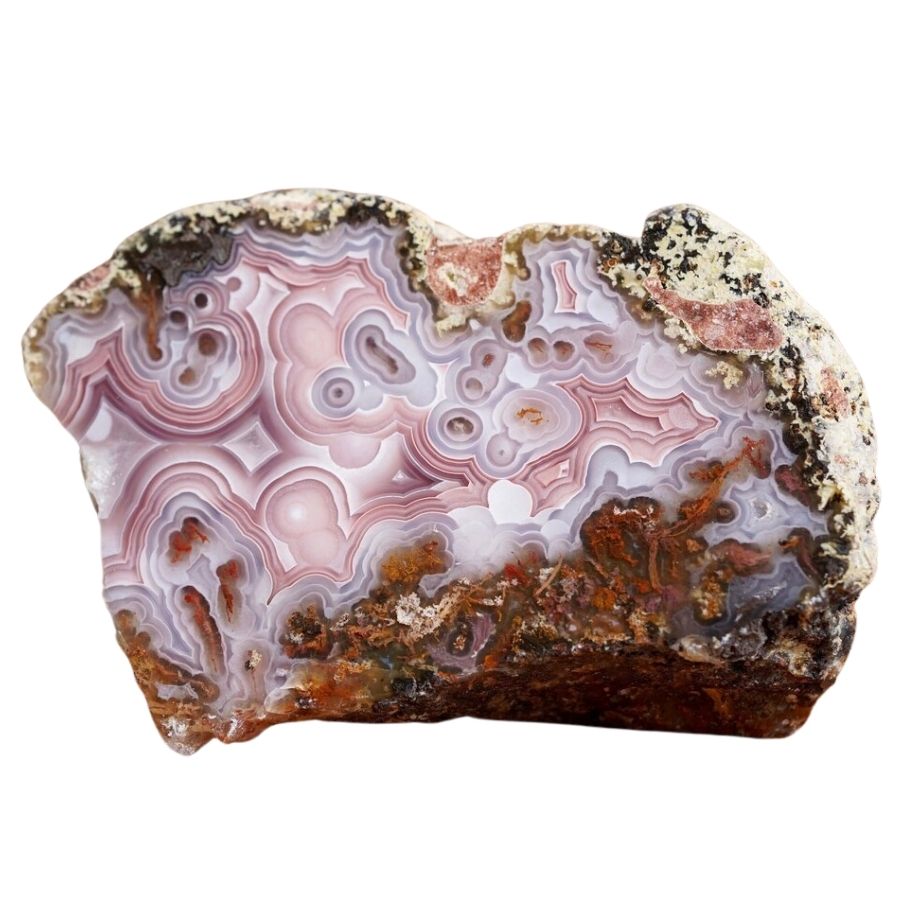
Agate is a really neat type of quartz that’s known for its amazing patterns and colors. It often has bands or layers of different colors, making it look like stripes or waves inside the stone.
This mineral can come in a wide range of colors, from blues and greens to reds and yellows, often mixed together in one stone. The way these colors blend and layer creates beautiful, eye-catching patterns.
Agate is a diverse and fascinating gemstone with many different types, each formed under unique geological conditions. These types include moss agate, blue lace agate, fire agate, and more.
Where you can find agate
Agate is found in Brazil, Mexico, and the United States, especially in states like Montana and Michigan. It’s also common in countries like Australia, India, and Madagascar.
Our guide on where to go rockhounding can give you tips on the best places to find cool rocks and minerals, including agate. This guide is a great resource for anyone curious about exploring the world of minerals and gems.
Jasper
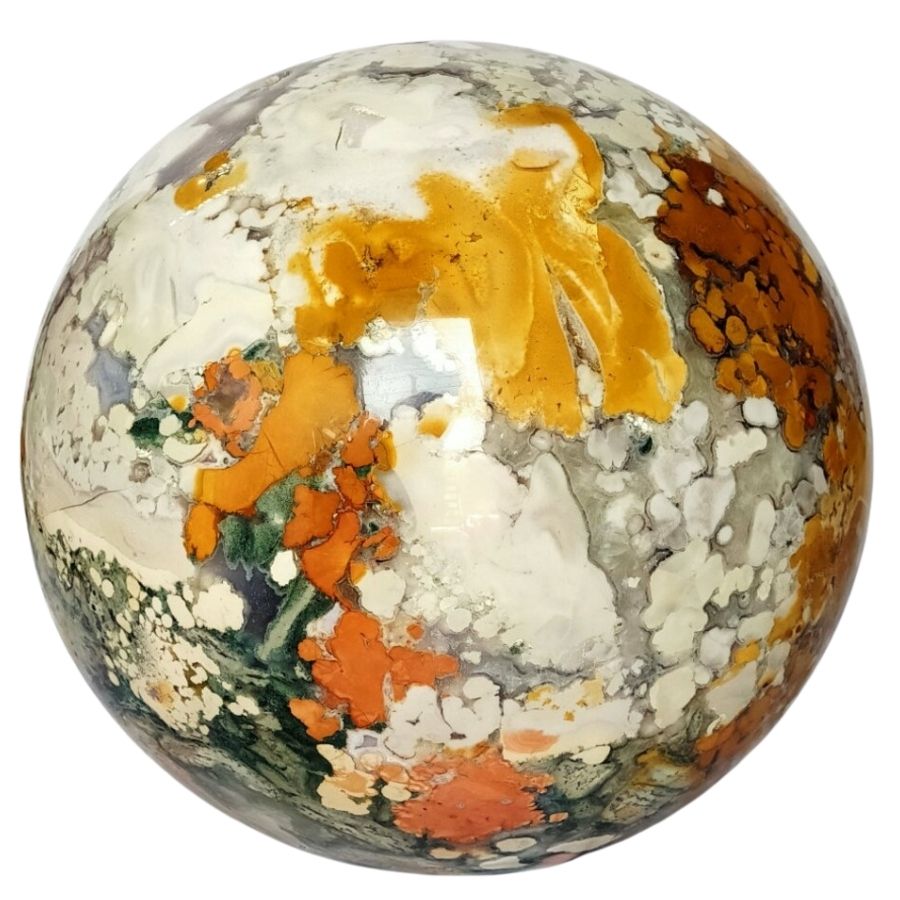
Jasper is a really interesting type of quartz that’s known for being super colorful. It comes in a bunch of different colors like red, yellow, brown, and green, and sometimes you’ll see multiple colors in one piece.
One cool thing about jasper is that it’s usually opaque, which means you can’t see through it. It often has these neat patterns or pictures on it, kind of like a painting on a rock.
People use jasper to create jewery and decorative items like bowls, vases, and carvings. The strong colors and patterns of jasper make it great for these artistic and practical uses.
Where you can find jasper
Jasper is found in Brazil, Egypt, and India. In the United States, states like Nevada, Colorado, Oregon, and Idaho are known for their colorful jasper deposits.
Faden Quartz
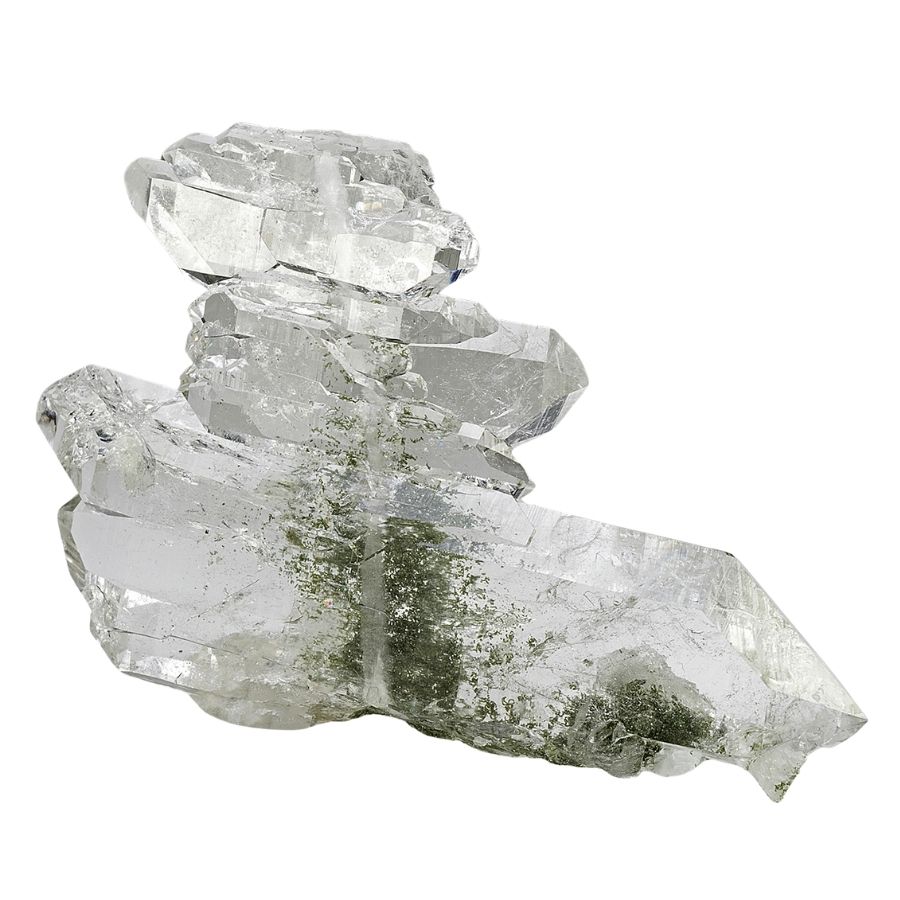
Faden quartz is a unique type of quartz that’s really interesting to look at. It’s known for having a white, thread-like line running through the crystal, which is where it gets its name – ‘Faden’ means ‘thread’ in German.
When you find Faden quartz, it usually looks clear or slightly cloudy, and the white thread-like line is clearly visible inside. These crystals can come in various shapes and sizes, sometimes forming in clusters.
Its “thread” forms during its growth in fractured rock environments. As the quartz crystal grows and heals the fractures within the rock, these thread-like inclusions of fluid or gas get trapped, creating the unique appearance of the crystals.
Where you can find Faden quartz
Faden quartz can be found in places like Pakistan and Afghanistan. It’s also discovered in areas like the Alps in Europe.
Tiger’s Eye
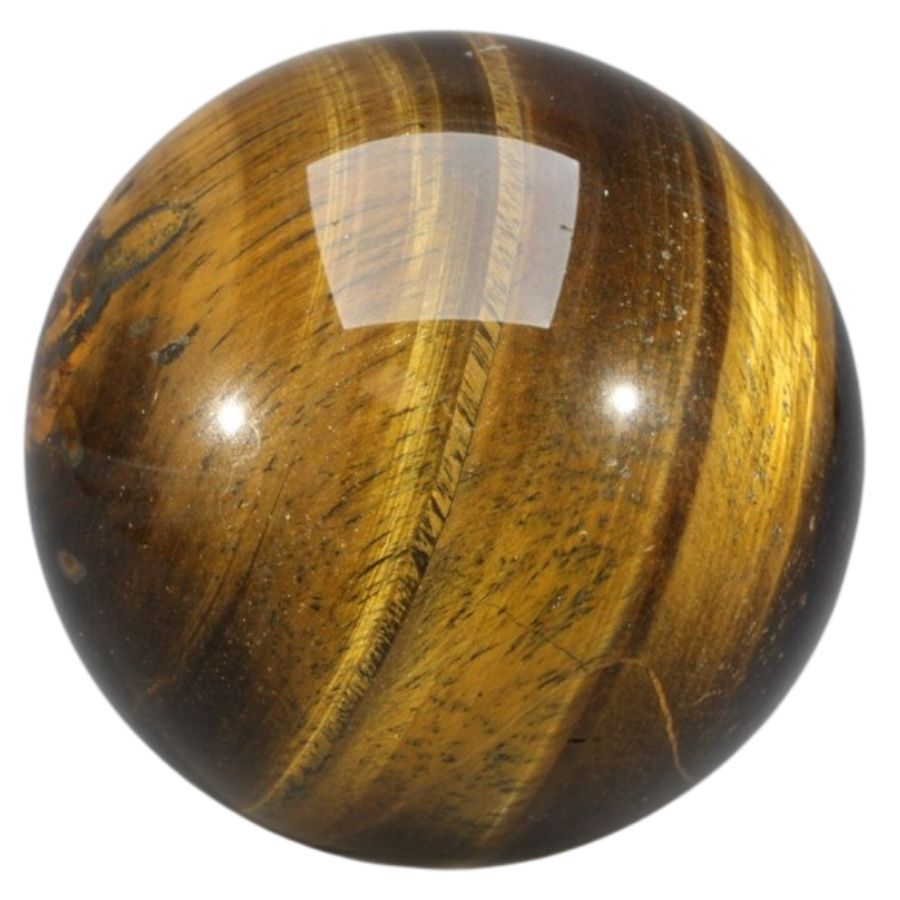
Tiger’s eye is a unique gemstone known for its remarkable chatoyancy, which creates a silky, lustrous effect resembling the eye of a tiger. It gets its golden to red-brown color from iron oxide inclusions.
The most notable physical property of tiger’s eye is its fibrous structure. These fibers are aligned, which causes light to reflect in a specific way, leading to the gemstone’s signature shimmering effect.
This unique appearance is a great example of what quartz looks like when it has special characteristics.
Tiger’s eye forms through a process where quartz gradually replaces crocidolite while retaining its fibrous structure. This process, known as pseudomorphism, results in the characteristic fibrous texture and reflective sheen.
Where you can find tiger’s eye
Tiger’s eye is mainly found in South Africa. It’s also found in countries like Australia, the United States, and India.
Herkimer Diamond
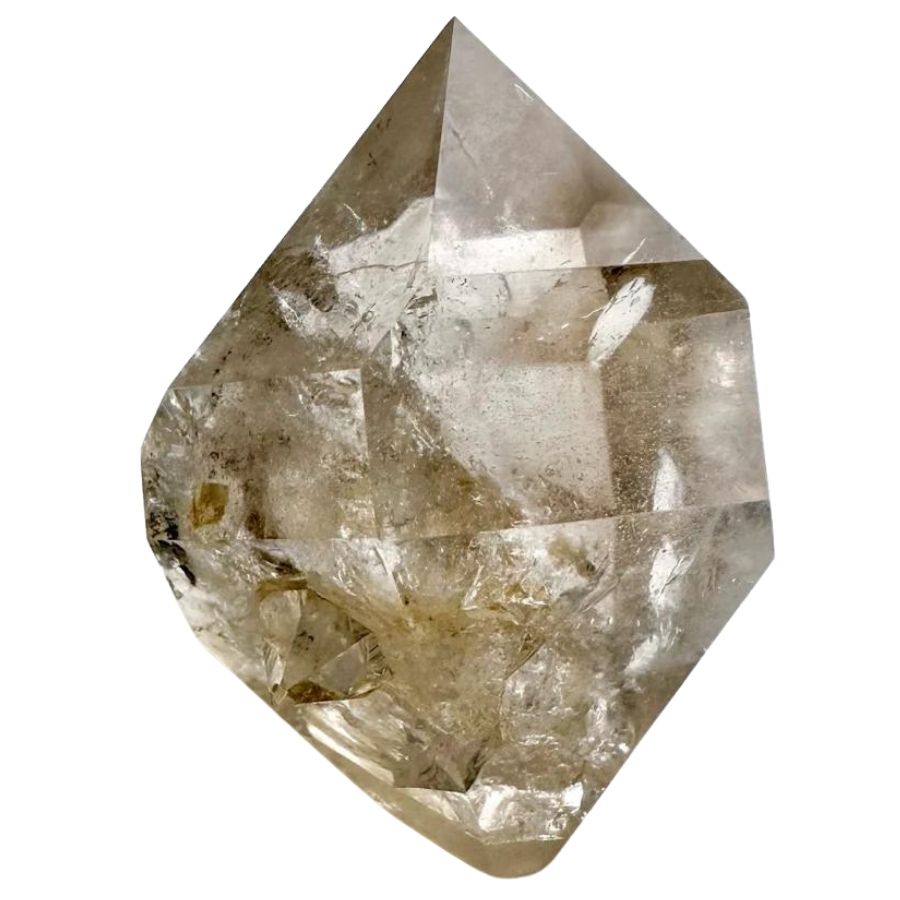
Herkimer diamonds are a really cool type of quartz that are known for being super clear and shiny. They’re not actual diamonds, but they sure do sparkle like them!
One of the neat things about Herkimer diamonds is that they have a special shape. They’re usually double-terminated, which means they have pointed ends on both sides.
Herkimer diamonds are known to be the oldest, clearest, and hardest quartz crystals on Earth, dating back an astonishing 500 million years.
They’re also the only crystals naturally faceted by Mother Nature, boasting a total of 18 naturally occurring faces.
Where you can find Herkimer diamonds
Herkimer diamonds are famously found in Herkimer County, New York, which is actually how they got their name. This area in the United States is well-known for these clear, beautiful quartz crystals.
Rutilated Quartz
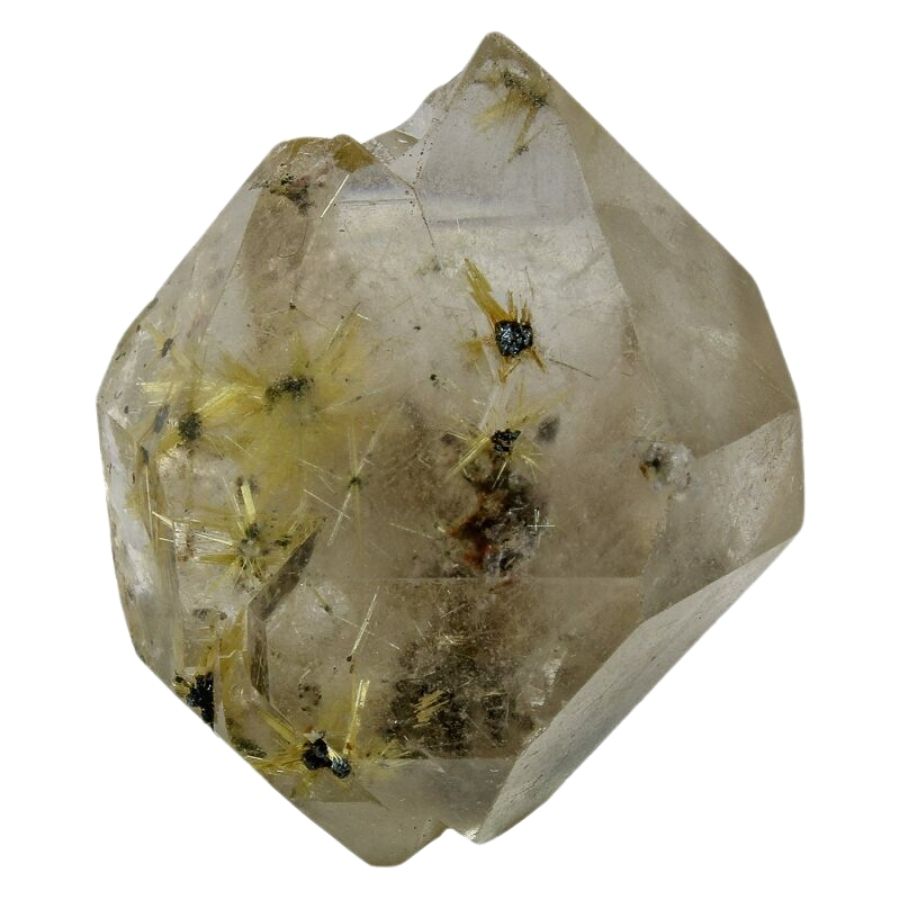
Rutilated quartz is a special type of quartz that has needle-like pieces of rutile inside it. These rutile needles can be gold, red, or black, creating an awesome look as they crisscross through the clear or smoky quartz.
Rutile is a mineral composed primarily of titanium dioxide, known for its high refractive index and tetragonal crystal system. It is widely recognized for its slender, needle-like crystal formations.
Unlike other crystals where inclusions typically reduce value, rutilated quartz is highly valued for the distinct aesthetic and quality these rutile inclusions bring.
Where you can find rutilated quartz
Rutilated quartz can be found in countries like Brazil and Madagascar. It’s also found in the United States, in states like Virginia and Colorado.
Tourmalinated Quartz
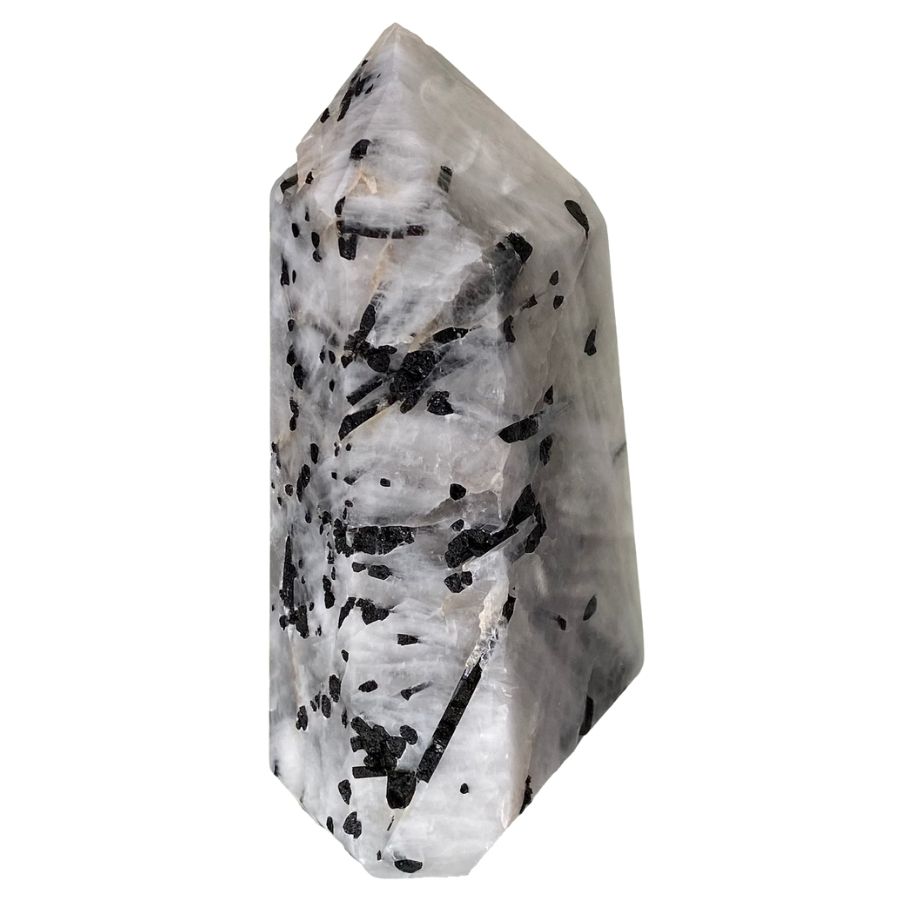
Tourmalinated quartz is a fascinating mineral that combines two different elements: clear quartz and dark tourmaline needles.
This unique mix results in a striking visual contrast, with the black or dark green tourmaline inclusions creating intricate patterns within the transparent quartz.
This special type of quartz typically forms in geological settings like pegmatite or hydrothermal veins. In these environments, the quartz and tourmaline grow together, resulting in tourmalinated quartz.
Tourmalinated quartz is popular in jewelry because of its distinctive look. Raw and unpolished specimens can also be used as home decor.
Where you can find tourmalinated quartz
Tourmalinated quartz can be found in Brazil and the United States, and it’s also found in Madagascar and Australia.
Onyx
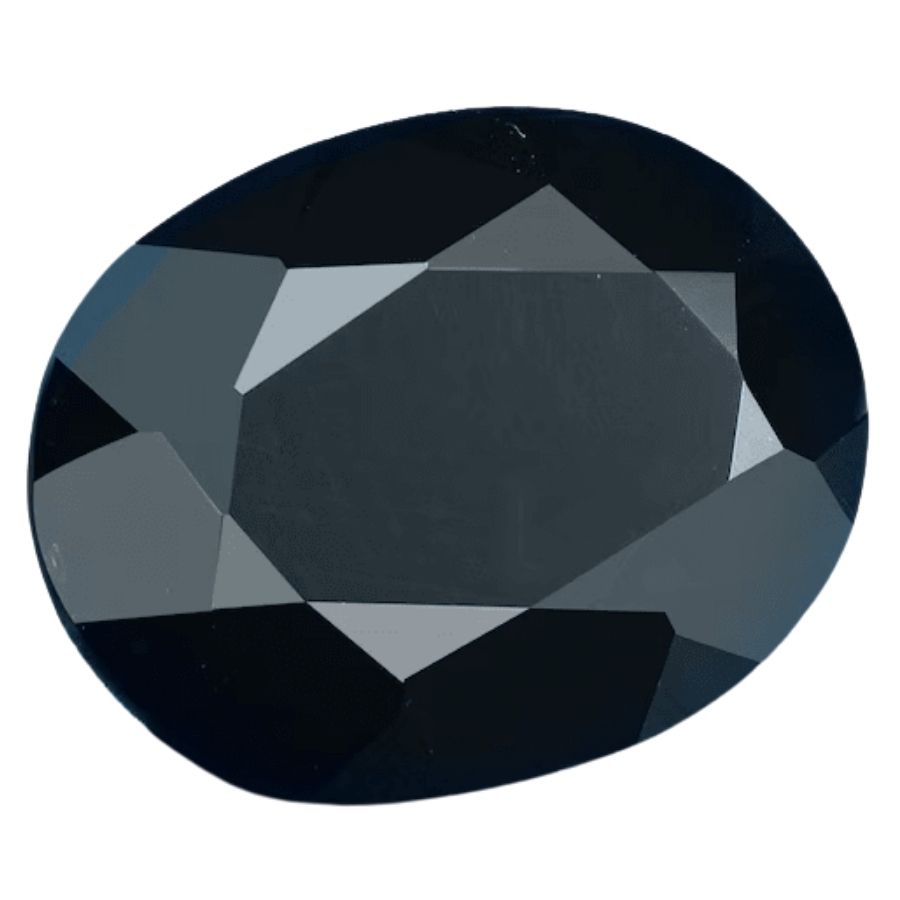
Onyx is characterized by its smooth, parallel bands of color. These bands, typically in shades of black and white, create a unique and contrasting pattern that makes onyx easily recognizable.
The formation of onyx occurs in the cavities of volcanic rocks, where silica-rich water deposits layers of chalcedony and quartz over time. This gradual layering results in the distinct banding pattern that defines onyx.
Geologists find onyx extremely valuable in understanding sedimentary processes and the history of the Earth’s geology. Its unique banding provides insights into how environmental conditions have changed over time.
Where you can find onyx
Onyx is found in various parts of the world, including Brazil, India, and Madagascar. It’s also been discovered in countries like Pakistan, Mexico, and the United States.
Phantom Quartz
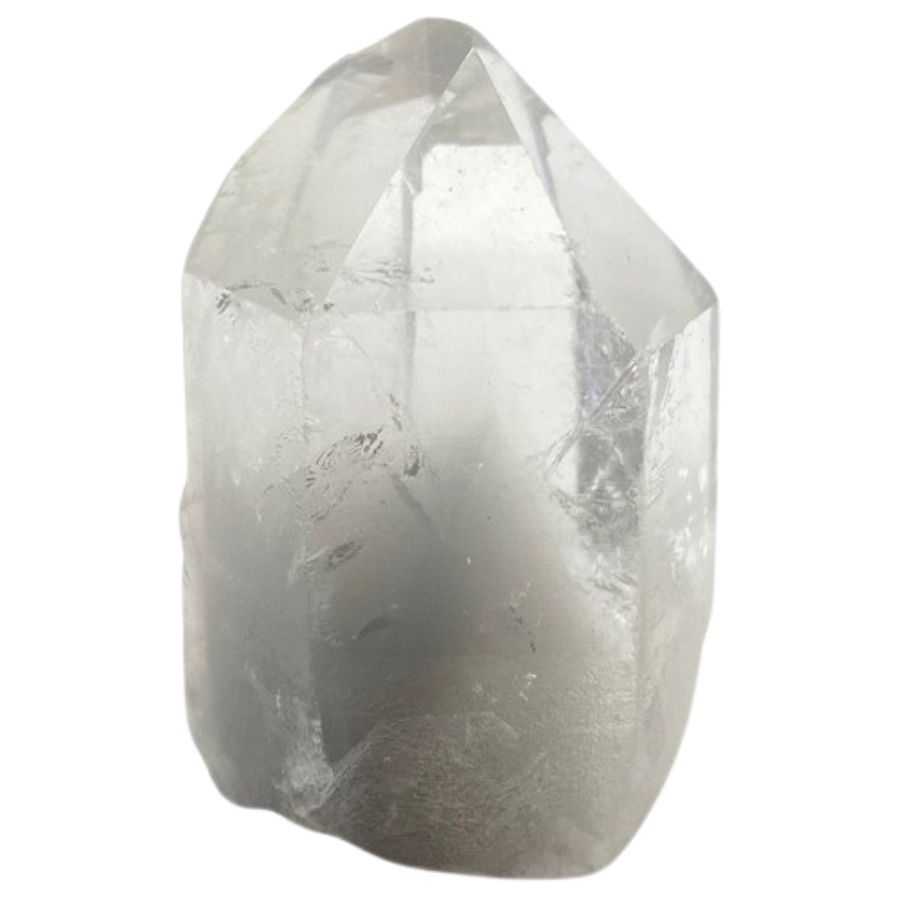
Phantom quartz is a unique type of quartz that contains the visible outlines of smaller quartz crystals within it, known as “phantoms.” These phantoms create fascinating ghost-like shapes inside the crystal.
The formation of phantom quartz happens when new layers of quartz gradually overgrow the older ones, often over thousands of years. This process is influenced by changes in the composition of mineral-rich fluids in the Earth.
Because of how it forms, phantom quartz can help geologists understand how crystals grow and how minerals are deposited in nature.
Where you can find phantom quartz
Phantom quartz can be found in Brazil, Madagascar, and the Alps. It can also be found in the United States, particularly in states like Arkansas and Colorado.
Prasiolite
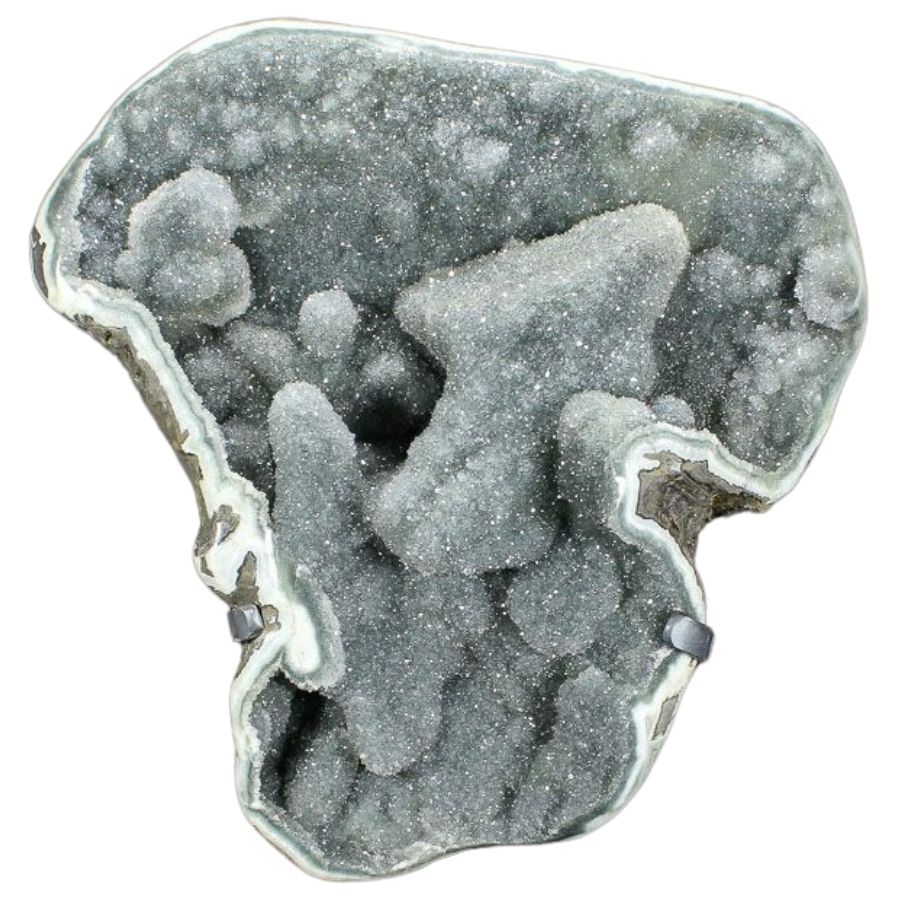
Prasiolite is a rare green variety of quartz, distinct from other quartz types due to its unique color. Unlike the more common purple amethyst or clear quartz, prasiolite charms with its serene green hue.
In nature, prasiolite forms under very specific conditions, needing just the right temperature and mineral content to develop its green color.
More commonly, prasiolite is made through a heat treatment process that transforms amethyst or yellowish quartz into this beautiful green stone.
Compared to other quartz varieties, prasiolite is quite rare in its natural form. The precise conditions required for its formation, involving both temperature and the presence of certain minerals, make natural prasiolite a special find.
Where you can find prasiolite
Prasiolite is known to be found in Brazil, as well as in the United States, particularly in Arizona and Wisconsin.
Chrysoprase
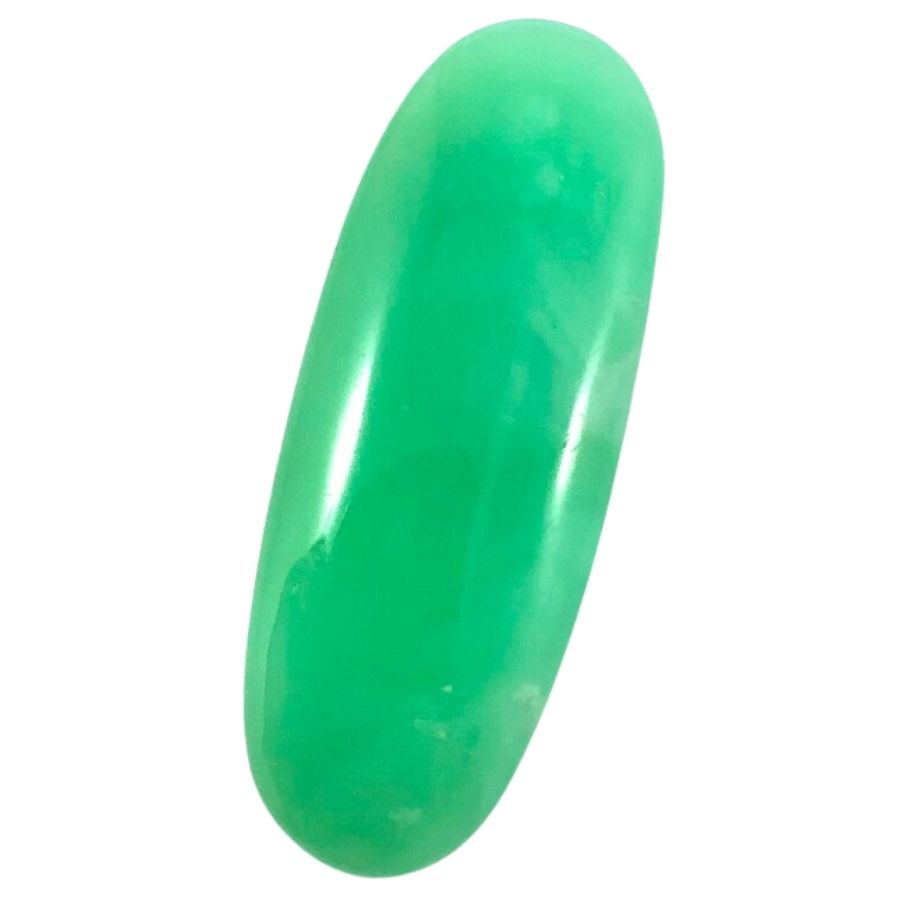
Chrysoprase is a special gemstone variety of chalcedony, famous for its vivid green color. This stone displays a range of green shades, from a bright apple green to a rich, deep green, making it quite eye-catching.
This mineral forms in nickel-rich serpentine or weathered ultramafic rocks. The presence of nickel is crucial, as it’s the element that gives chrysoprase its distinctive green color.
Chrysoprase is sensitive to prolonged exposure to sunlight and harsh chemicals, both of which can alter its beautiful green color. To keep chrysoprase looking its best, it’s important to store it away from direct sunlight and to clean it gently.
Where you can find chrysoprase
Chrysoprase is found in notable places include Australia, Brazil, and Russia.
Bloodstone
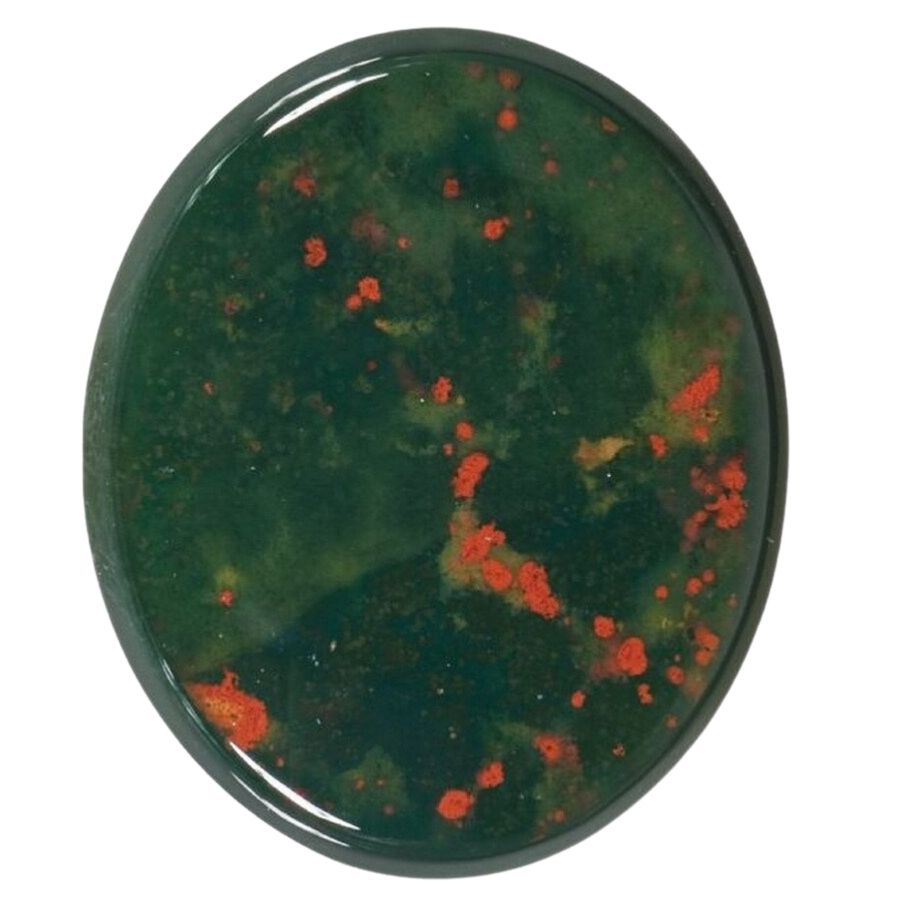
Bloodstone, a type of chalcedony, is known for its striking appearance with a dark green background speckled with red spots.
This unique contrast between the deep green and the vivid red speckles gives bloodstone a distinctive and eye-catching look.
The natural formation of bloodstone involves the embedding of red inclusions, typically iron oxide or jasper, within the green chalcedony matrix.
This process generally occurs in volcanic or sedimentary rocks, where the iron oxide or jasper particles are deposited within the developing chalcedony, creating the characteristic red speckles on the green background.
Where you can find bloodstone
Bloodstone can be found in India and Brazil, and it’s also found in Australia, China, and the United States.
Dumortierite Quartz
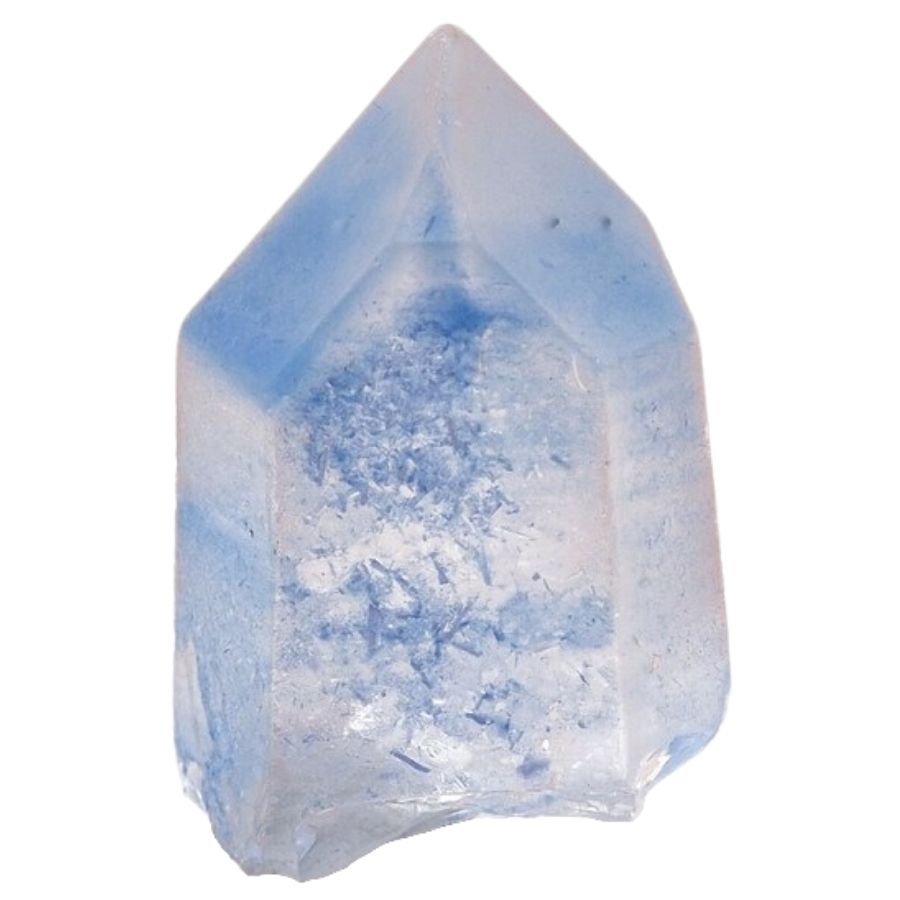
Dumortierite quartz is a special type of quartz that’s known for having dumortierite, a fibrous mineral, within it. This combination forms under high pressure and temperature conditions, resulting in a unique and durable quartz variety.
Unlike typical clear or lightly colored quartz, dumortierite quartz stands out with its deep blue to violet hues. Its distinct color and dense, fibrous structure make it different from other kinds of quartz, giving it a bold and unique appearance.
Dumortierite quartz is relatively rare compared to more common quartz varieties. Its scarcity is due to the specific conditions required for its formation, which don’t occur as frequently as those for other types of quartz.
The price of quartz can vary depending on several factors like rarity, color, and size. Quartz, in general, is a widely available mineral, but some types, like dumortierite quartz, can be more valuable due to their unique characteristics and rarity.
Where you can find dumortierite quartz
Dumortierite quartz can be found in Brazil, the United States, specifically in Nevada and California, and also in Madagascar.
Chert
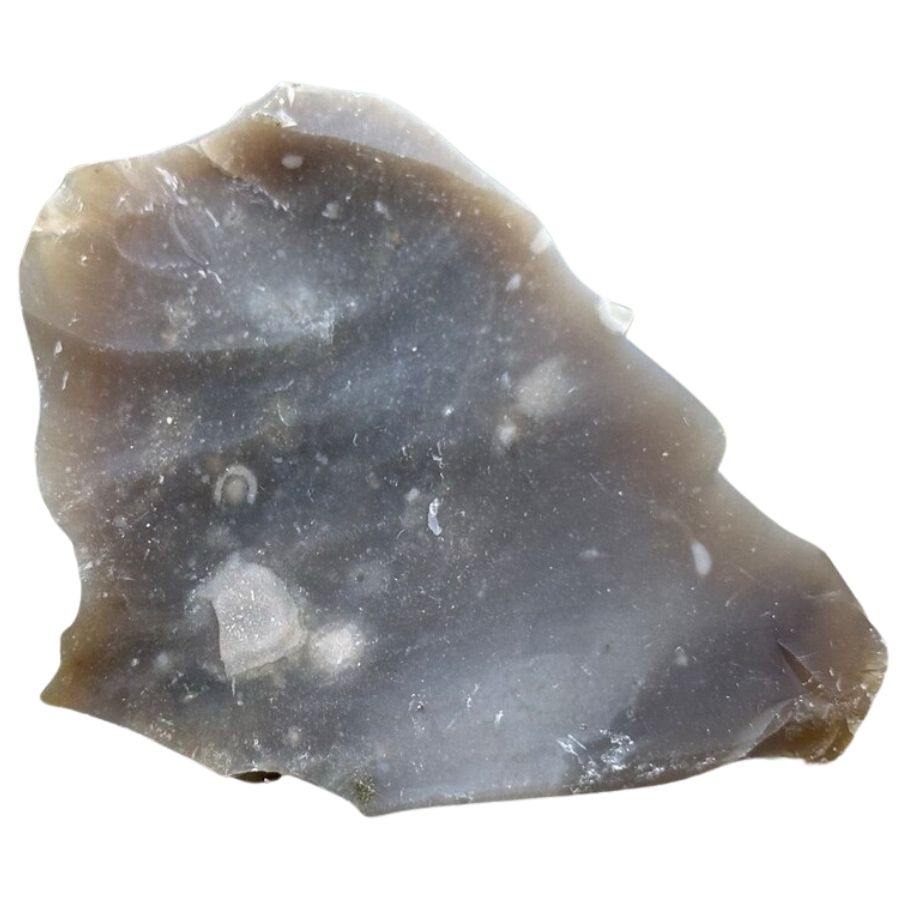
Chert is a type of sedimentary rock that’s known for being really hard and smooth. It’s usually found in colors like brown, green, and black, and has a glassy or waxy look.
Chert forms from tiny pieces of silica that settle in water and get compressed over a long time. As layers of this silica build up, they eventually turn into solid rock, creating the chert we see today.
Throughout history, chert has been super important for making tools. Early humans used it to make sharp objects like arrowheads and knives because it breaks with a sharp edge, making it perfect for cutting.
Where you can find chert
Chert can be found in many places around the world, often in areas with limestone or other sedimentary rocks. It’s particularly common in parts of the United States, like the Flint Hills of Kansas, and also in countries like England and France.
Scepter Quartz
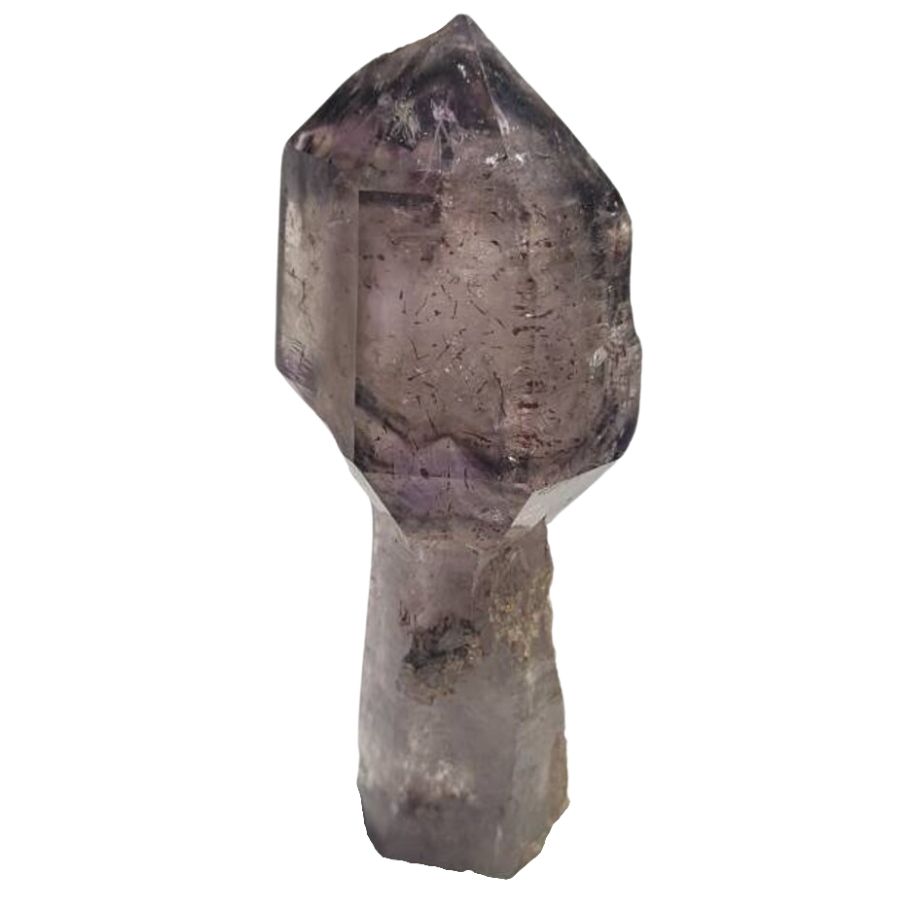
Scepter quartz is a really cool type of quartz crystal that looks like a scepter or wand. It has a larger crystal head perched on top of a narrower crystal stem, making it look quite different from regular quartz crystals.
The unique shape of scepter quartz happens because of how it forms. A new crystal layer grows over an existing quartz crystal, creating the larger “head” on a smaller “stem.”
This growth process is different from how most quartz crystals grow, which usually form in more uniform shapes.
Scepter quartz is pretty rare because it needs special conditions to form. It forms in environments with just the right amount of space and minerals for the larger crystal to grow over the smaller one.
Where you can find scepter quartz
Scepter quartz can be found in Madagascar and Brazil. It’s also present in the United States, particularly in the states of Washington and Colorado.

